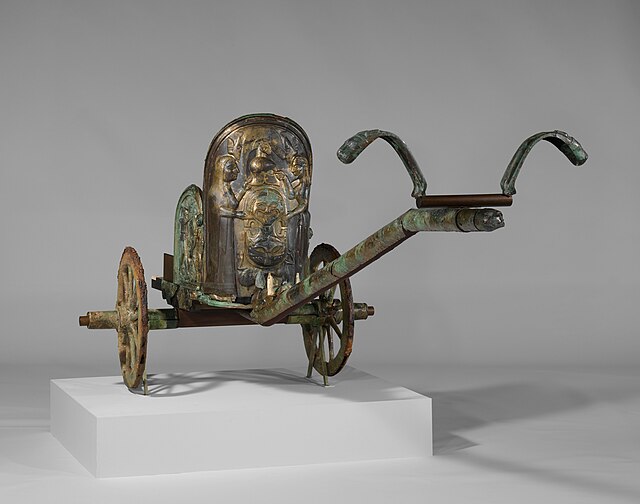The Tomb of the Leopards is an Etruscan burial chamber so called for the confronted leopards painted above a banquet scene. The tomb is located within the Necropolis of Monterozzi, near Tarquinia, Lazio, Italy, and dates to around 470–450 BC. The painting is one of the best-preserved murals of Tarquinia, and is known for "its lively coloring, and its animated depictions rich with gestures," and is influenced by the Greek-Attic art of the first quarter of the fifth century BC.
Confronted leopards above a banqueting scene in the Tomb of the Leopards
A psykter found in the Tomb of the Leopards, depicting an athlete, a servant boy, a youth and a dog
The Etruscan civilization was an ancient civilization created by the Etruscans, a people who inhabited Etruria in ancient Italy, with a common language and culture who formed a federation of city-states. After conquering adjacent lands, its territory covered, at its greatest extent, roughly what is now Tuscany, western Umbria, and northern Lazio, as well as what are now the Po Valley, Emilia-Romagna, south-eastern Lombardy, southern Veneto, and western Campania.
Biconical cinerary urn with crest-shaped helmet lid, 9th–8th century BC, from Monterozzi (Fontanaccia), Tarquinia, Museo archeologico nazionale
Urn in the shape of a hut, which represents the typical Etruscan house of the Villanovan phase, 8th century BC, from Vulci, Musée d'art et d'histoire de Genève
Monteleone chariot, one of the world's great archaeological finds, 2nd quarter of the 6th century BC
Etruscan pendant with a large equilateral cross of concentric circles flanked by four small right-facing swastikas among its symbols from Bolsena, Italy, 700–650 BC. Louvre





